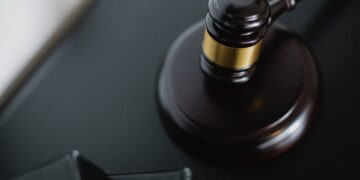There are a host of exclusions and exceptions to the rule against hearsay. The general theory behind these hearsay “carve outs” is that the circumstances surrounding the out-of-court statement make the statement inherently trustworthy. In other words, we don’t need to evaluate the speaker live in court because, under the circumstances, we can assume the speaker was telling the truth.
In United States v. Wandahsega, No. 18-1219, 2019 WL 2183198, at *7 (6th Cir. May 21, 2019), the Sixth Circuit analyzed one of these exceptions, the exception for statements made for medical diagnosis or treatment, which is set out in Federal Rule of Evidence 803(4). Specifically, the Sixth Circuit analyzed what kind of foundation a party has to lay before offering a child’s out-of-court statement under this exception. The Court held that a party need not offer direct evidence that the child understood that he or she was speaking with medical personnel for the purpose of medical treatment. In so doing, the Sixth Circuit broke with the Eighth Circuit, which does require such evidence.
A. Rule 803(4) and the rationale behind it.
Before getting into the details of the Wandahsega case, it makes sense to start with the text of Rule 803(4). It reads:
“The following are not excluded by the rule against hearsay, regardless of whether the declarant is available as a witness . . . . (4) Statement Made for Medical Diagnosis or Treatment. A statement that: (A) is made for–and is reasonably pertinent to–medical diagnosis or treatment; and (B) describes medical history; past or present symptoms or sensations; their inception; or their general cause.” Fed. R. Evid. 803(4).
As the advisory committee to the Federal Rules of Evidence has explained, the theory behind the reliability of such an out-of-court statement is straightforward: self-preservation. The committee wrote in the notes to the rule: “Even those few jurisdictions which have shied away from generally admitting statements of present condition have allowed them if made to a physician for purposes of diagnosis and treatment in view of the patient’s strong motivation to be truthful.” In other words, because we can assume that most people have a strong motivation to get the right treatment for whatever is ailing them, we can assume that they speak the truth to medical personnel, avoiding exaggerations, outright lies, etc.
B. The facts of Wandahsega
In Wandahsega, the government had charged the defendant with sexually abusing his six-year old son, in violation of 18 U.S.C. § 2244(a)(5).
By way of background, after the abuse was discovered, a family member had brought the child to the emergency room of a local hospital. At trial, the government called a doctor and a nurse to testify about out-of-court statements that the six-year-old had made to them.
With respect to the nurse, she testified that, on the day in question, she was wearing scrubs and a name tag. Before asking the child any questions, she explained to him that she was a nurse. When she then asked him why he was at the emergency room, the child told her that “[his] dad did something bad to [him] twice.” The nurse further explained that asking patients “what brings them [to the emergency room] to be seen” is an important part of the triage process “[b]ecause it helps [the staff] determine what type of needs they need medically, physically, mentally, and how fast they go in the back to be evaluated by a physician.” She also testified that when someone arrives at the emergency room and says that they have been sexually assaulted, the identity of the perpetrator is important because it would affect their diagnosis and treatment in terms of mental-health or emotional-health concerns.
With respect to the doctor, he testified that, on the day in question, he was wearing scrubs and a name tag. Before asking any questions, he identified himself as a physician. Upon questioning, the child told the doctor “that his dad had touched his penis and put a finger up his rectum several days prior to his hospital visit,” “that this had happened on two separate occasions,” “that the alleged assault had hurt a little, but that it did not cause bleeding,” and “that he was not currently in pain.” Although the doctor asked the child if he could examine the child’s private areas, the child refused. The doctor ordered urine testing to rule out the possibility of sexually transmitted diseases.
The government offered the testimony of the nurse and doctor under Rule 803(4).
C. The Sixth Circuit addresses the significance of the “young” declarant.
The defendant objected to the admission of the nurse’s and doctor’s testimony. He argued that the age of the declarant rendered the exception inapplicable. Specifically, the defendant argued that where a declarant is “very young,” the government must offer evidence showing that the child displayed a “selfish subjective motive” when speaking to medical personnel. In other words, the defendant argued, the “record must demonstrate that the child understood that he or she was speaking with medical personnel for the purpose of medical treatment.”
In making this argument, the defendant cited the Eighth Circuit’s decision in United States v. Turning Bear, 357 F.3d 730, 738 (8th Cir. 2004). In that case, under similar facts, the Eighth Circuit had held that a district court had erred in allowing, pursuant to Rule 803(4), a forensic interviewer to testify about statements that a child had made to her before a physical examination by a doctor. In so holding, the Eighth Circuit had focused on the child’s young age. The Eighth Circuit wrote: “There is simply no evidence that [the child], who was three years and ten months old at the time of the interview, understood the medical significance of being truthful in discussing the details of the alleged abuse with [the forensic interviewer], and that she thus had the selfish subjective motive of receiving proper treatment.” United States v. Turning Bear, 357 F.3d 730, 739 (8th Cir. 2004).
The Sixth Circuit rejected the defendant’s argument. It first observed that, unlike the Eighth Circuit, its prior precedent did not require analysis into whether “children understood the medical context of the interaction.” Wandahsega, 2019 WL 2183198, at *7. Even so, the Sixth Circuit reasoned, the evidence was sufficient to conclude that the child did understand the medical context of the interaction. The Court wrote:
“[E]ven if Turning Bear were deemed applicable to the present case, which it is not, [the nurse] and [the doctor] both testified that they were wearing scrubs and nametags while speaking with [the child]. [The doctor] explained to [the child] that he was a physician and asked if he could perform a physical exam. [The nurse] explained that she was a nurse. These circumstances support the proposition that [the child] understood that he should tell the truth because he was at the hospital speaking with medical personnel for the purpose of medical diagnosis and treatment.” Id. at *7.
D. Takeaways
In my view, the Sixth Circuit’s analysis is sound. Although neither the defendant nor the Eighth Circuit in Turning Bear ever expressly said as much, their interpretation of Rule 803(4) will, in most if not all cases, require the declarant to actually testify to lay a foundation for the admission of an out-of-court statement. Such an interpretation is problematic for a few reasons.
One, as a practical matter, such testimony is unnecessary to ensure that the rationale behind the exception is honored. As the advisory committee recognized, the idea behind the exception is that the declarant has an incentive to be truthful, that incentive being his or her own health interests. If the party offering statement can show that, in response to what is clearly a medical inquiry, a declarant provided a responsive answer, one can reasonably conclude that the declarant was providing that answer honestly. The jury doesn’t need to hear from the declarant to draw such a conclusion. It flows logically from the interaction between the medical personnel and the declarant. To be sure, very young children will often be unable to formulate a responsive answer to a medical inquiry. But in such circumstances, this exception won’t even come into play. And in cases where a young declarant has provided a responsive answer to such an inquiry, a defendant may still attack the weight of such a statement after it has been admitted.
Two, and perhaps more importantly, the Sixth Circuit’s interpretation of Rule 803(4) is more faithful to the plain language of the rule than the Eighth Circuit’s interpretation. This exception, like all those enumerated within Rule 803, applies “regardless of whether the declarant is available as a witness.” In other words, even if the declarant is sitting in the first row of the courtroom gallery, fully available to testify about his or her own out-of-court statement, another witness may instead testify about statement. As previously noted, the Eighth Circuit’s and the defendant’s interpretation of Rule 803(4) would effectively require that the declarant not only be available to testify about his or her out-of-court statement, but that the declarant actually testify about his or her motive in making the statement. In other words, its interpretation would force the declarant into the witness box. The plain language of the rule doesn’t support such an interpretation and, indeed, undermines it.
Regardless of how one feels about the Wandahsega decision, the case is a reminder to practitioners to research the foundational requirements that apply in their particular circuits and plan accordingly. To the extent that you’re practicing in the Eighth Circuit and wish to offer a similar statement into evidence, you will likely need to call the declarant or, alternatively, attempt to offer some other evidence that the declarant understood the context of his or her encounter with medical personnel.
If you would like to read the entire opinion, you can access it here: https://cases.justia.com/federal/appellate-courts/ca6/18-1219/18-1219-2019-05-21.pdf?ts=1558467015











